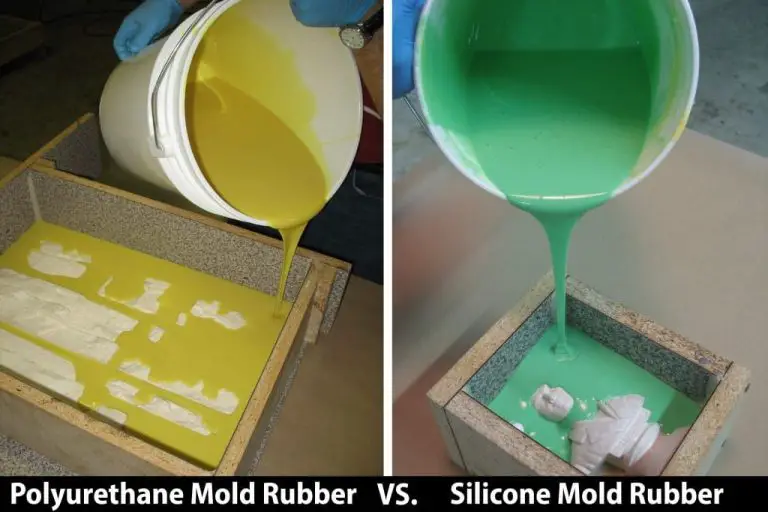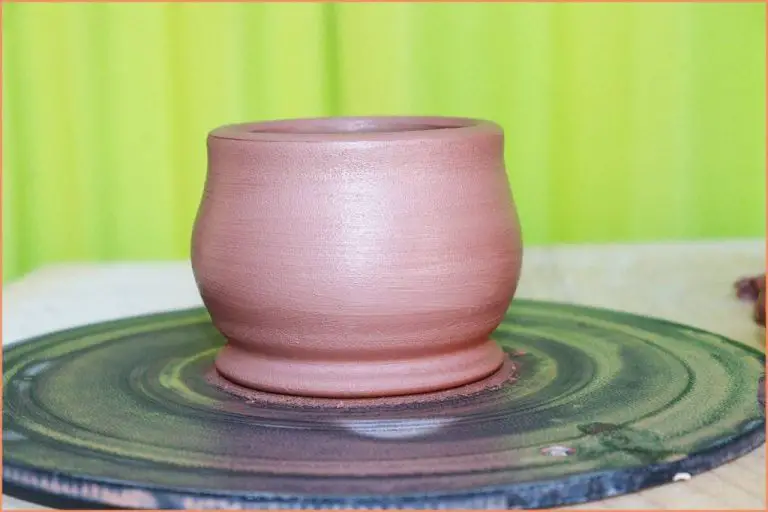What Do I Need To Make My Own Clay Pots?
Clay pots are containers made from clay that is molded and fired at high temperatures to harden it. Clay pottery dates back over 20,000 years, with some of the earliest known clay vessels found in China and Japan. Clay pots allow beginners to easily shape unique pottery using their hands, basic tools, and an oven. Making your own clay pots is fun and relaxing, plus it provides a great sense of satisfaction to create something sturdy and decorative.
This guide will provide an overview of the clay pot making process, the supplies you’ll need, and techniques for shaping, decorating, glazing, and firing your creations. With some clay, simple tools, and a kiln or oven, you can craft your own beautiful and functional pots to use at home or give as gifts.
Types of Clay
There are several main types of clay that are commonly used for making pottery and ceramic items. Each type has different properties that affect the finished look and durability of the clay. The three primary types are:
Earthenware Clay
Earthenware clay is made from sedimentary clays that have iron and other mineral impurities in them. It fires at lower temperatures, between 1830°F – 2190°F. Earthenware clay has a porous, softer consistency after firing. It can come in various colors like red, brown, and terracotta. Earthenware absorbs water and can be fragile. It’s better for items like flower pots and decorative pieces.
Stoneware Clay
Stoneware clay is denser and less porous than earthenware. It fires at higher temperatures between 2190°F – 2365°F. The higher firing makes stoneware less permeable, so it’s stronger and holds water better than earthenware. Stoneware clay can be found in gray, brown, and white varieties. It’s commonly used for dishes, mugs, and utilitarian pottery.
Porcelain Clay
Porcelain clay is the purest type of clay made primarily from kaolin. It fires at very high temperatures over 2365°F. Porcelain is thin, white, and translucent after firing. It’s impermeable to liquids and extremely strong. Porcelain clay requires more specialized skill but is ideal for delicate pottery like vases and figurines. The high firing temperature gives it a smooth glass-like finish.
Clay Tools
When making your own clay pots, there are some basic tools you’ll need to get started. Here are the essentials:
Basic Tools
Clay knife or rib – This is used to smooth surfaces, trim away excess clay, and shape details. A basic knife will do for starting out.
Cutting wires – These stainless steel wires are used to slice clay into sections or cut shapes out of clay slabs.
Needle tool – This helps etch lines and textures into the clay surface for decoration.
Sponge – A damp sponge smooths clay and blends joints between attached pieces.
Rolling pin – Necessary for rolling out clay into flat, even slabs.
Advanced Tools
Pottery wheel – This spinning wheel shapes clay into symmetrical forms. It takes practice to use.
Extruder – For producing long rods or tubes of clay quickly and evenly.
Molds – These shape clay by pressing it into an existing form.
Texture stamps/rollers – Press these objects into clay to imprint patterns.
Glaze brushes – Soft brushes designed to apply glazes smoothly.
Where to Purchase
Beginner clay tool kits can be found at most craft stores. For more advanced tools, specialized ceramic and pottery supply stores will have the best selection. Many clay tools can also be purchased online. Start with basic tools and build up your supplies as you progress in working with clay.
Preparing the Clay
Properly preparing your clay is an essential first step before you begin sculpting your pottery. The goal is to knead the clay thoroughly to achieve an optimal consistency that is smooth, pliable, and without air bubbles.
Start by cutting off a workable portion of clay from your bulk supply. For most projects, 0.5 to 1 pound of clay is a good starting amount. The key is kneading the clay: fold the clay over itself, press down firmly but not too aggressively, and continue working it for 5-10 minutes. This softens the clay by warming it with friction and evenly distributes moisture.
As you knead, also “wedge” the clay by slamming a section against your work surface. This compresses the clay to push out air bubbles. Keep wedging and kneading until the clay is smooth, uniform, and has a consistency similar to gum or dough. It should be moldable without being too sticky or dry and cracking. The clay is now ready for your pottery wheel or hand sculpting.
Getting the moisture content right is crucial. If the clay is too wet, let it air dry slightly. If it’s too dry, spritz water and knead it in. Well prepared clay that has been properly wedged and kneaded will produce your best creations.
Shaping Methods
There are several techniques you can use to shape clay into pots and other objects. Some of the main shaping methods include:
Pinched Pots
Pinched pots are made by pinching the clay with your fingers and thumbs to form the basic shape. Start with a ball of clay and push your thumb into the center to form the pot’s interior. Then pinch the clay between your fingers and rotate to thin the walls. Pinching is great for making small, simple pots.
Coil Building
With coil building, you roll out “snakes” or coils of clay and stack them on top of one another. Add water to “score” or smoothen the surface between coils. Let the coils become leather hard then blend the coils together. Coil building allows you to make larger, more intricate handbuilt pots.
Slab Construction
Slab construction involves rolling out flat “slabs” of clay and joining them to construct a pot’s shape. Cut out shapes from a thick slab then score and attach. Add coils between slabs for rounded surfaces. Let dry, then refine. Slab construction is useful for making flat shapes like tiles as well as complex geometric pottery.
Wheel Throwing
Wheel throwing involves centering a lump of clay on a pottery wheel and using your hands to shape it as the wheel spins. Opening the clay with thumbs, apply pressure with fingers and palm to raise the walls. Trim excess clay and refine the shape when leather hard. Wheel throwing takes practice but allows you to shape and center pots with uniform thin walls.
Drying the Clay
After your clay pot has been shaped, it needs to be thoroughly dried before firing. There are a few ways to dry the clay:
Air Drying: Allow your clay pot to air dry slowly at room temperature. Place it in a warm, dry area out of direct sunlight. Avoid quick drying, which risks cracking. Rotate your piece periodically so it dries evenly.
Using a Fan or Dehydrator: You can speed drying by directing a fan towards your pot or placing it in a food dehydrator. Keep the air flow gentle and rotate the piece often. Monitor closely to prevent uneven drying.
Monitoring for Cracking: Check regularly for cracks as the clay dries. Cracks happen when some areas dry faster than others. If cracks appear, stop drying and allow the piece to equalize before continuing. Small cracks can be repaired once the clay is leather hard.
Firing Clay
Firing the clay is one of the most important steps in pottery making. Firing permanently hardens the clay by heating it to high temperatures. There are a few options for firing clay:
Kilns: Kilns are small furnaces designed specifically for firing clay and ceramic work. The main types are electric and gas kilns. Electric kilns are easy to use and provide precise temperature control. Gas kilns can reach higher temperatures but require ventilation. Kilns allow firing pottery indoors and in any weather.
Outdoor Firing: Firing pots outdoors is an ancient method that doesn’t require specialized equipment. The pots are placed in a fire pit or makeshift brick enclosure and burned using wood as fuel. Outdoor firing gives unique natural effects but can be unpredictable.
For most clay bodies, firing to between 2,000°F – 2,300°F (1,093°C – 1,260°C) will fully fuse and harden the clay. Specific clay types may require different optimal temperatures. Using a kiln allows carefully controlling the temperature for consistent results. Outdoor firing relies on experience to estimate when the right temperature is reached.
Kilns are preferred for their control and convenience but outdoor firing adds organic variation. Both methods permanently transform soft clay into hardened, durable ceramic pottery.
Applying Glazes
Glazes are an important part of finishing clay pots, as they provide color, shine, and protection for the pottery. There are many ingredients that can be used to create glazes such as silica, fluxes, kaolin, and colorants. Glaze recipes require the right combination of these ingredients to achieve the desired effect.
Glazes can be applied using different techniques. The basic methods are dipping, pouring, brushing, and spraying. Dipping involves submerging the pottery piece in a container of glaze. Pouring involves slowly pouring the glaze over the surface. Brushing uses a soft brush to apply an even coat of glaze. Spraying requires a spray gun or bottle to evenly mist the glaze onto the pottery. Each technique has its advantages and works best for certain types of pieces and glazes.
Firing the glazed pottery requires special care. Most glazes require two firings. The first firing melts the glaze onto the clay body in a process called glaze firing. The second firing vitrifies the glaze at a higher temperature to finalize the glaze chemistry and create a smooth, glassy finish. It’s important to follow the temperature specifications for the glaze recipe. With the right combination of ingredients, application techniques, and firing, beautiful glazed finishes can be achieved.
Polishing and Sealing
After the clay has been fired, you may want to polish and seal the surface for a smooth, glossy finish. Polishing clay can really make the colors pop and give it an attractive sheen.
There are a few different methods for polishing fired clay:
-
Use very fine sandpaper in progressions up to 2000+ grit to sand the surface smooth and remove any debris. Sand in a circular motion to evenly polish the surface.
-
Apply a polishing compound or wax with a soft cloth and buff the surface for high shine. Repeat as needed to build up the gloss.
-
Use a buffing wheel or microfiber cloth to buff the pottery until it shines.
-
Rub a polishing stone against the surface in a circular motion.
Once the desired sheen is achieved, it’s important to seal the clay to protect the finish. Top options for sealing include:
-
Acrylic sealers – Provide a water-resistant glossy coat.
-
Polyurethane – Offers a durable, plastic-like seal.
-
Wax sealants – Soak into the clay for a natural, low-sheen finish.
-
Lacquer – Quick-drying with a bright, glassy finish.
Apply the sealer in a well-ventilated area according to the product instructions. Let the sealer fully cure before handling the clay. With proper polishing and sealing, your homemade clay pots will have a professional-looking, durable finish.
Displaying and Caring for Pots
Once your pottery pieces are complete, you’ll want to display them in a way that shows off your hard work and creativity. Here are some tips for beautifully exhibiting your clay pottery:
Display on open shelving or pedestals to highlight the shape and design of your pieces. Neutral backdrops like light walls or natural wood shelves help the colors and textures of the pottery stand out.
Group pieces together for an eye-catching collection. Try arranging different shapes, sizes, and colors together for visual interest.
Add lighting above or around your pottery to create dramatic shadows and highlights. Track lighting or directional spotlights work well.
Elevate special singular pots by placing them under glass cloches or domes. This adds a sense of value.
Incorporate complementary decorative accents like flowers, textiles, or other handmade objects to complement the look and feel of your pottery.
Change your displays seasonally or when you create new pieces. The variety will keep your collection looking fresh.
Pottery is delicate and requires proper care for longevity. Follow these storage and cleaning tips:
Allow clay and glazes to fully cure and harden before use. Check manufacturer instructions.
Handwash pots gently with mild dish soap and water. Avoid abrasive scrubbers.
Dry thoroughly with a soft cloth to prevent water spots.
Store pottery somewhere clean, climate-controlled, and away from direct sunlight to prevent fading.
Wrap pieces individually in tissue paper if stacking for storage to prevent scratches.
Consider applying a food-safe sealant on kitchenware if frequent washing is needed.



